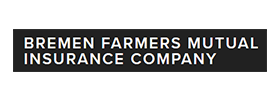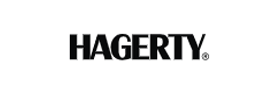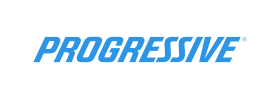Owning any store, whether physical or virtual, can be challenging! There are plenty of factors abound and a wrong turn could have a lasting impact on your business, its reputation, or on your final product.
The USA ranks king as having the most e-commerce stores of any country with over 13.98 million. That’s a lot of stores, and not all of them live past a few years. Want to be successful online? At AHI Group, we insure tons of different business types, helping them find the right commercial insurance package for their risk requirements. We know e-commerce risk.
Failure no. 1: Not looking at what others are doing
You ever hear that saying, “focus on yourself, not others?” Well, that’s a great motto for personal development but it doesn’t really have a place in running an e-commerce website. What makes an e-commerce store successful is your ability to stand out when compared with other online stores and you can’t do that unless you at least know what they’re doing.
So, do your studying! Research even before you start your business so you have an idea of what works, what doesn’t, and what you’re capable of. If you have an idea of the market even before you begin, you’re already one step closer to success.
Consider conducting what’s called a competitive analysis. This is an in-depth evaluation of comparisons between you and other brands to determine what makes you stand out. This can allow you to know where your unique qualities stand out and allows you to craft your marketing strategy more accurately.
Failure no. 2: Failing to optimize for mobile users
In 2023, the USA had over 187 million online mobile shoppers. Failing to optimize for mobile devices is failing to optimize for half or more of your potential customers. Many people shop on-the-go when they don’t have access to a laptop or computer, so it makes sense that having a site that’s mobile-friendly can expand your customer base that much more. Plus, search algorithms like it more when sites are mobile-friendly! In fact, it’s been noted in a study from Think with Google that customers who have had negative experiences with your site on mobile devices are 62% less likely to purchase in the future.
Mobile optimization is just another feature that can help make the shopping process for your e-commerce website all the smoother.
Failure no. 3: Not investing in fast-loading pages
Page speed is crucial for e-commerce stores because it directly affects user experience, conversion rates, and search engine rankings. In today’s fast-paced digital world, customers expect websites to load quickly. A slow-loading site can frustrate visitors, leading them to abandon their shopping carts and seek out competitors. Nowadays, everything is fast–ordering food, doing self-check-out at grocery stores, etc.
Having fast-paced tech is very convenient, but it has also created thousands, if not millions of impatient customers. If your site is just a tad too slow, expect your success rate to be that much lower.
Page speed is also a critical factor in search engine optimization (SEO). Search engines like Google prioritize fast-loading websites in their rankings, as they aim to provide the best possible experience for users. A faster site is more likely to appear higher in search results, driving more organic traffic to the store. This increased visibility can lead to more potential customers discovering the e-commerce store, ultimately boosting sales.
Failure no. 4: Poor user experience
This one is probably a no-brainer, but poor user experience (UX for short) is one of the biggest detriments to e-commerce websites. When users encounter a website that is difficult to navigate, slow to load, or not optimized for mobile devices, they are likely to become frustrated and leave. This abandonment not only results in lost sales but also diminishes the likelihood of those users returning in the future. A seamless and intuitive UX is essential to keeping customers engaged and encouraging them to complete their purchases.
UX can also impact your business’s reputation! In today’s digital age, a bad review, whether posted on Google, TikTok, or even Instagram can get around, and your site could be known as the “slow to load” or “bad customer service” store. Consistent negative feedback like this will deter potential future customers from visiting the site and could put a wedge in your traffic and sales.
Once again, search engines, like Google, also take user experience into account. Factors such as page load speed, mobile responsiveness, and overall site usability are part of the algorithms that determine search rankings. A poor UX can result in lower search engine rankings, reducing the visibility of the e-commerce store. Lower visibility means fewer organic visitors, which in turn can negatively impact sales and growth.
Bonus failure no. 5: Not having insurance
A last note? While not really an “operational mistake,” we also find too few e-commerce stores have the insurance they need to protect their products, liability, and more. E-commerce stores may not have a physical storefront, but they still have assets, workers, reputation, and interactions–which means potential room for claims that could impact your finances and reputation. Get insured with AHI Group and learn what kind of coverage your business can benefit from.
Give AHI Group a call
AHI Group’s specialty is helping businesses get the coverage they need. We have confidence in our insurance knowledge, which can help prepare your e-commerce store to fortify itself against future risks. With years of business behind us, we have pride in our reputation and priority of our customers’ interests.
Insurance is not a one-size-fits-all solution. We get to know you and your business so we can craft coverage in accordance with your risk-related needs. Give us a call.































